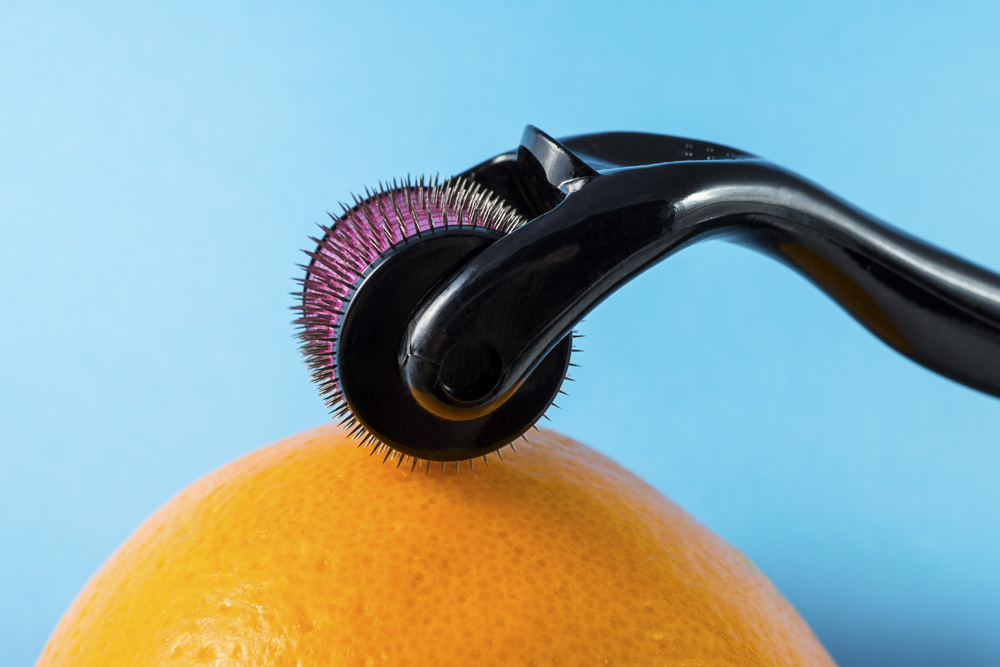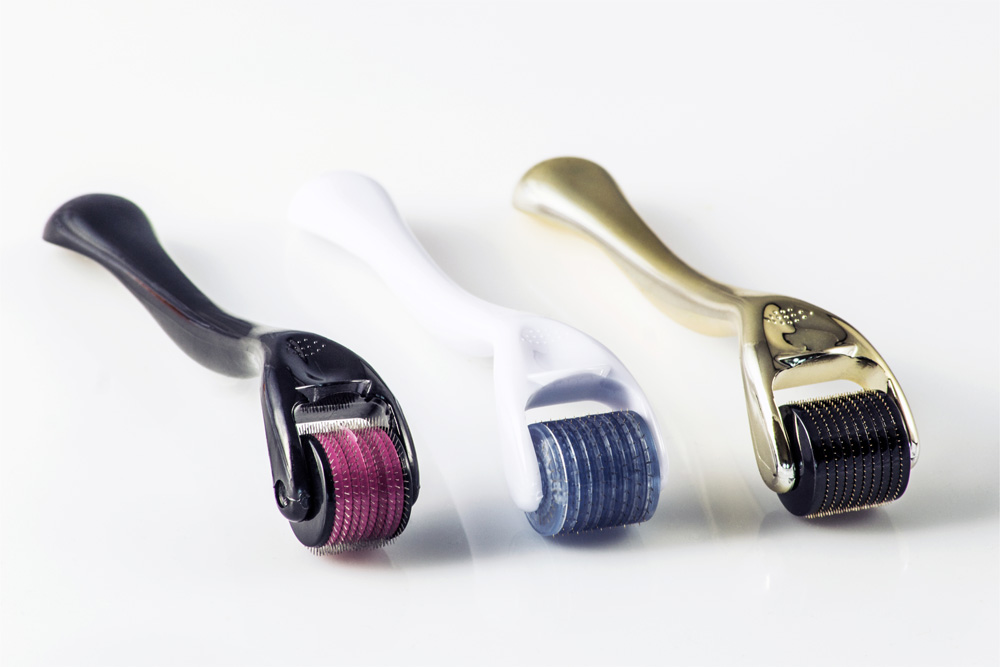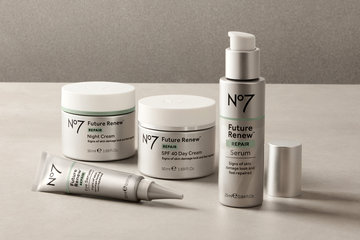
On a quest to look or feel their best, some women will try just about any beauty treatment. This can entail drinking Bentonite clay or eating pig’s trotters. It can also involve having to deal with some unsavoury stuff on our bodies or faces, bird poop, sheep’s placenta, snail slime or bee venom anyone? As the French saying goes, there’s always a bit of suffering involved in order to amp up one's beauty game. Have you tried sitting in a chamber with freezing temperatures (cryotherapy) yet?
While the thought of sticking tons of small needles into your face sounds like a self-torture method from a beauty horror story, microneedling is actually way less scary than it sounds. And from striving for visible, long lasting skin rejuvenation to effectively improving scars and stretch marks, there’s a lot of ways you can benefit from it. Here’s all you need to know about the treatment celebrities like Angelina Jolie, Jennifer Aniston and Gwyneth Paltrow have used.
What Is Microneedling?

Microneedling, aka dermarolling or Collagen Induction Therapy, is a cosmetic procedure that involves a dermaroller, which contains hundreds of tiny titanium needles, being rolled across your face in a controlled manner. When the needles touch the surface of skin, microscopic wounds are created and this faux alarm tricks your skin into thinking it’s experiencing trauma so it jumpstarts the body’s own natural repair system. This in turn stimulates the skin into repairing itself by increasing the blood flow to the area and sending collagen and elastin production into overdrive.
If you opt for professional in-office treatments, dermatologists use a Dermapen, an electronic micro-needling device that oscillates as it punctures the skin. While you see immediate and dramatic results, microneedling is actually considered a minimally invasive procedure with hardly any downtime compared to treatments like resurfacing lasers, microdermabrasion or peels. There may be some redness that appears several hours after the treatment, but any tenderness or discomfort is minimal. However, the recovery process does mostly depend on the length of needles used.
Fortunately, microneedling can also be done at home, with the budget-conscious at-home kits a much cheaper alternative. What’s more, you’ll still get great results with regular maintenance and the pain threshold is much lower. You can find decent derma rollers on online retailers like Amazon.
What Can Microneedling Do For Us?

The production of collagen, the most plentiful protein found in the human body that is responsible for keeping connective tissue together, slows down after the age of 25. As explained before, microneedling causes collagen to rush to the skin’s surface, but since there isn’t a real injury, there isn’t anything to repair, so the skin just grows new collagen.
This helps keep your complexion more glowing and radiant, as well as tighter and plumper. The collagen stimulation also produces subtle improvements in fine lines and wrinkles, hyperpigmentation, acne scars, stretch marks and other skin irregularities like discolouration. Additionally, microneedling will help to gradually thicken the under eye area, helping to improve the appearance of dark circles and bags.
Plus, it helps to enhance the absorption of all your favourite creams and serums due to all the new passages in your skin. So basically, the best time to apply your go-to product is just after a microneedling session. Microneedling also gently exfoliates and increases blood flow, which are very important steps when it comes to cleaning out your pores.

What to Take Into Consideration:
It can cause skin irritation: If you start mirconeedling too often, this could cause bleeding, swelling, breakouts as well as other skin problems. It may even cause some scarring if you are taking certain medicines or have recently had radiation or laser treatments.
Limit the amount of pressure you apply. It’s best to stick to moderately firm pressure to avoid damaging your skin. Applying too much pressure can rupture delicate superficial blood vessels, for example.
Hold off if you have inflamed skin. Microneedling areas with active acne or skin infections will just cause more skin irritation and may even spread infection.
Avoid applying certain products straight afterwards. Try to steer clear of thick make-up products and moisturisers straight after a microneedling session as your pores can get clogged, which can lead to an acne breakout.
Don’t forget hygiene: Make sure your derma rollers are properly cleaned between each treatment and avoid sharing with others to sidestep skin complications.

Choose the right needle size: All needle sizes serve different purposes, so identify your end skin goal. If you want your products to penetrate better, make pores less visible or treat hyper pigmentation, use a superficial needle between 0.25 and 0.5 millimeters long. When it comes to treating wrinkles and acne scars, 1.0mm is what you need and don’t use needles over this size if you’re doing it at home. Needles that are too long could cause serious damage to your delicate facial skin. For stretch marks and surgical scars (cesarean, vaccination, liposuction) you can go for the 1.5mm needle (it’s highly recommended to avoid the 2.0mm needles for home use).
Be aware of how often you should do it:
0.5 mm = Up to three times weekly
1.0 mm = Every two weeks
1.5 mm = Every three to four weeks

















